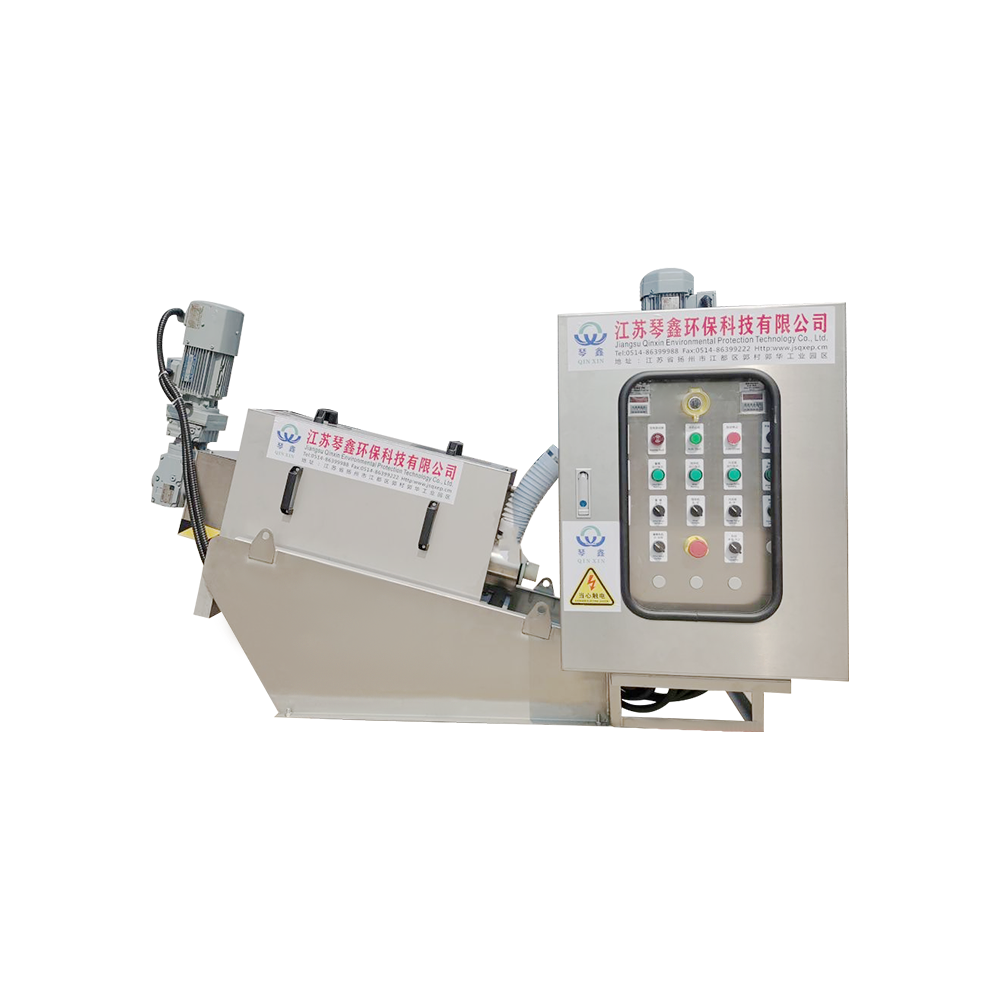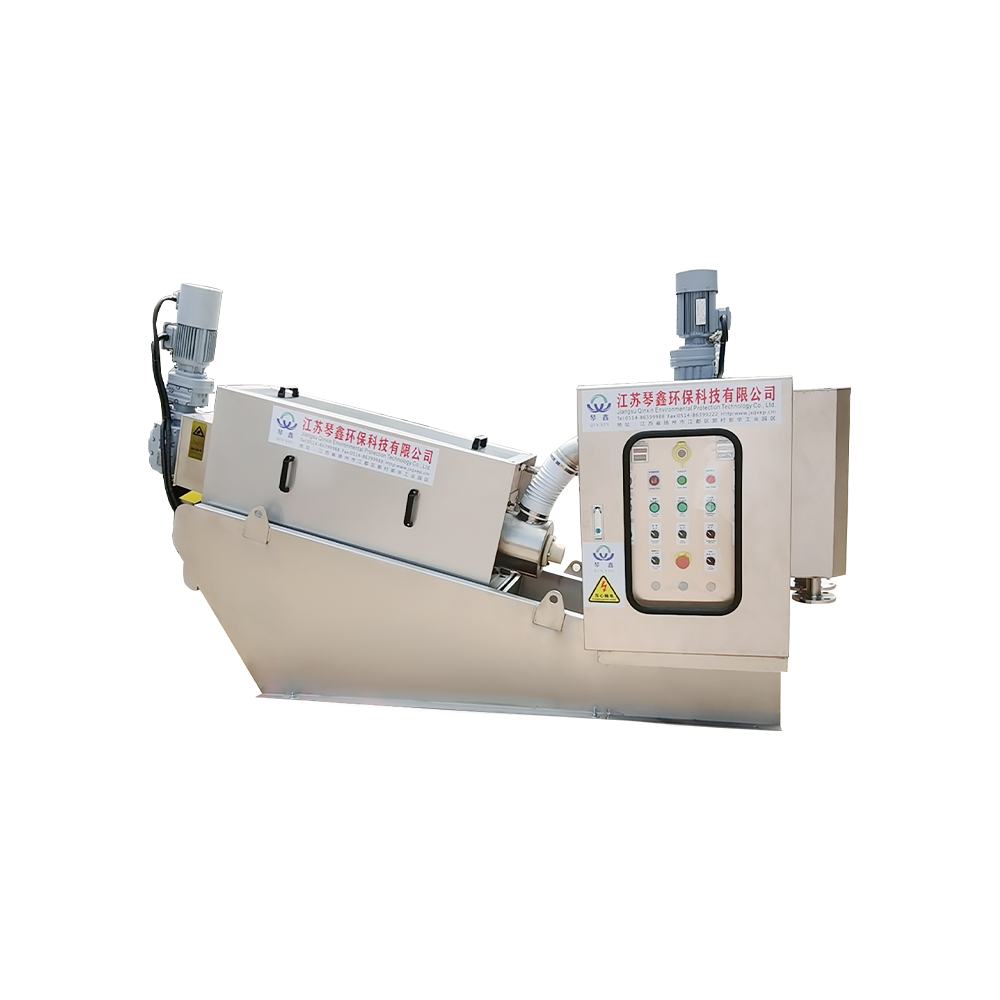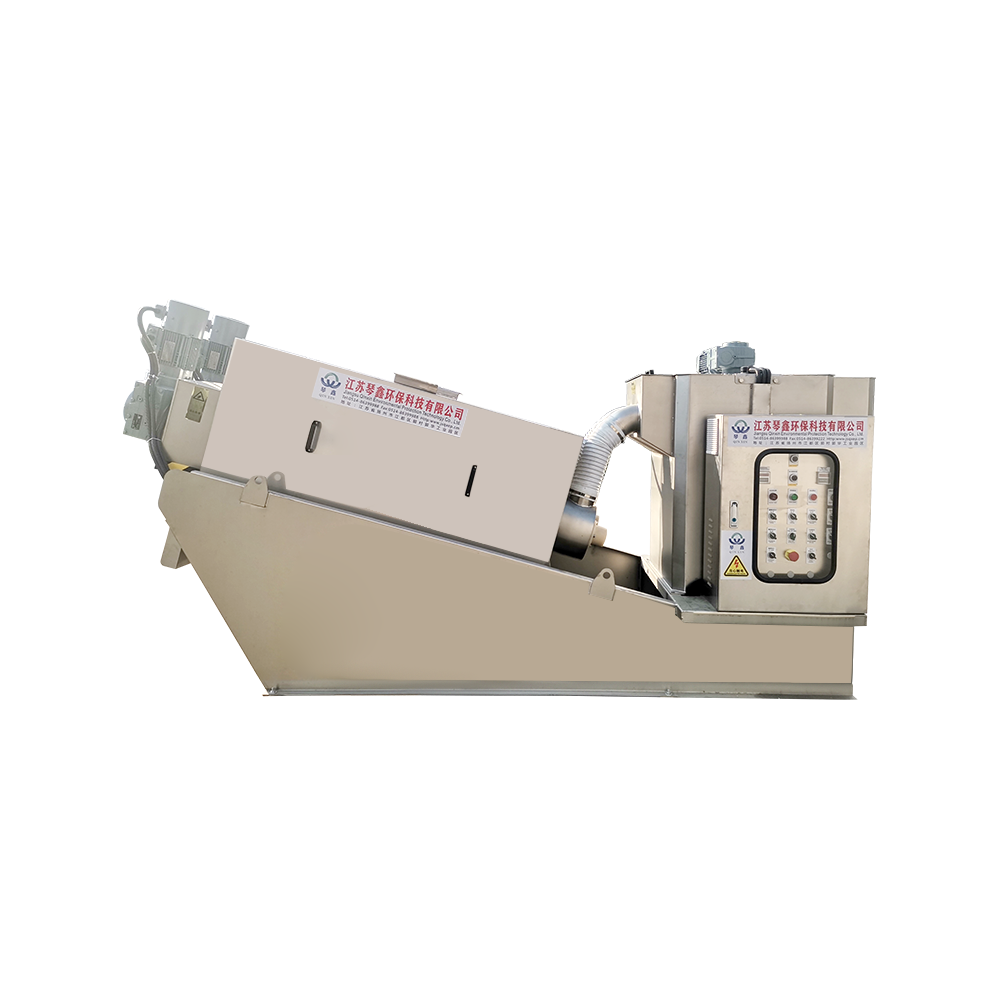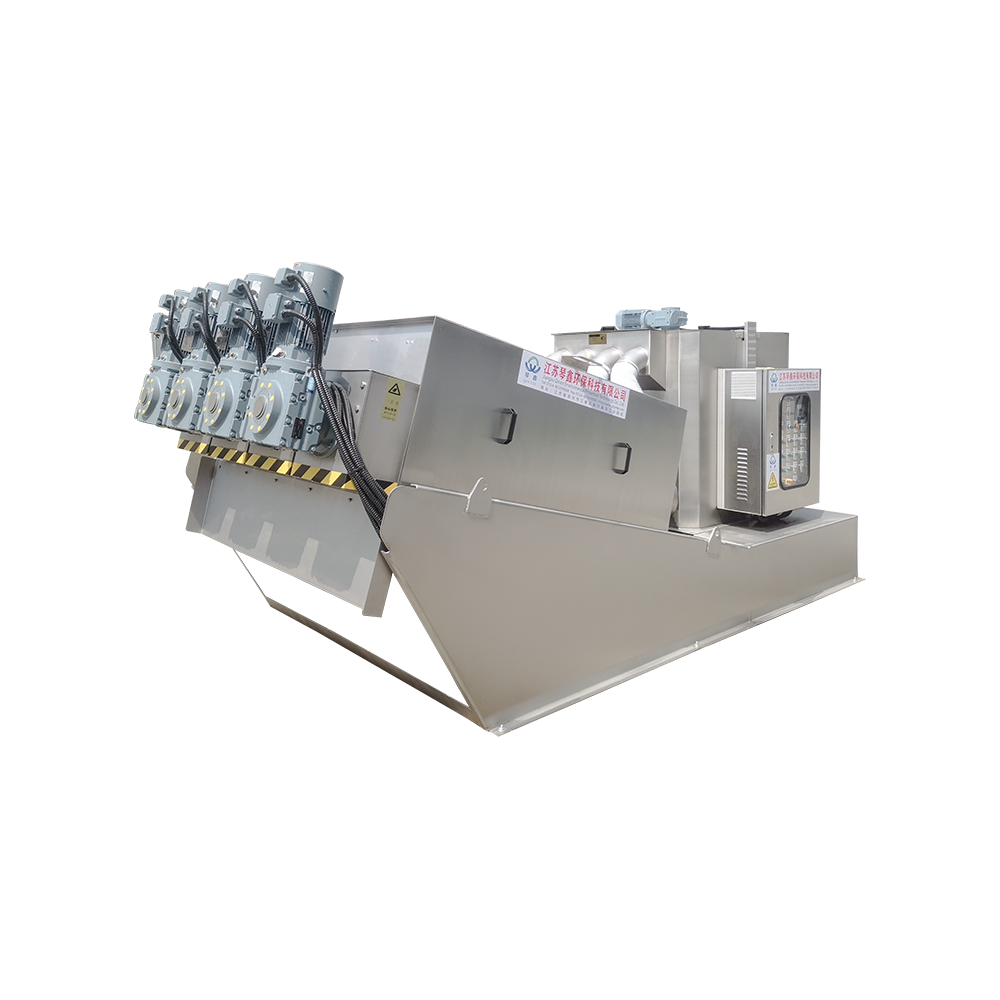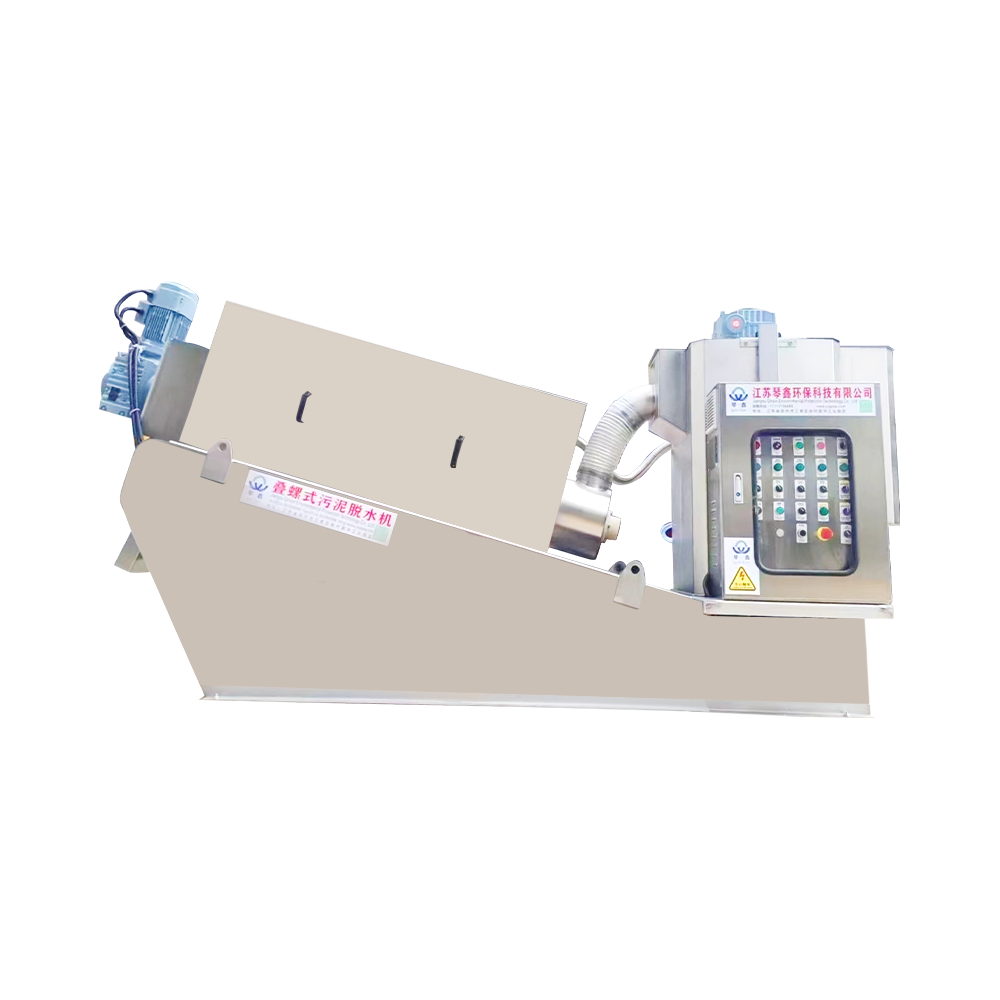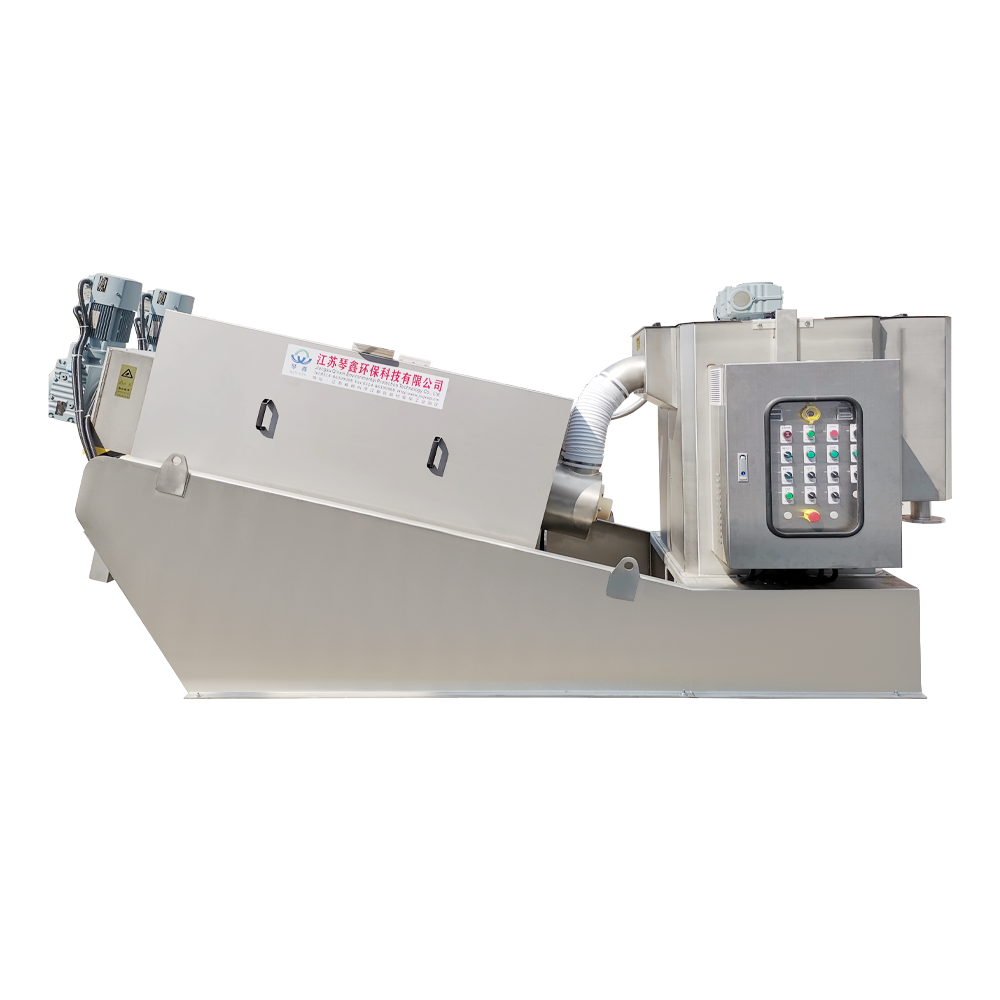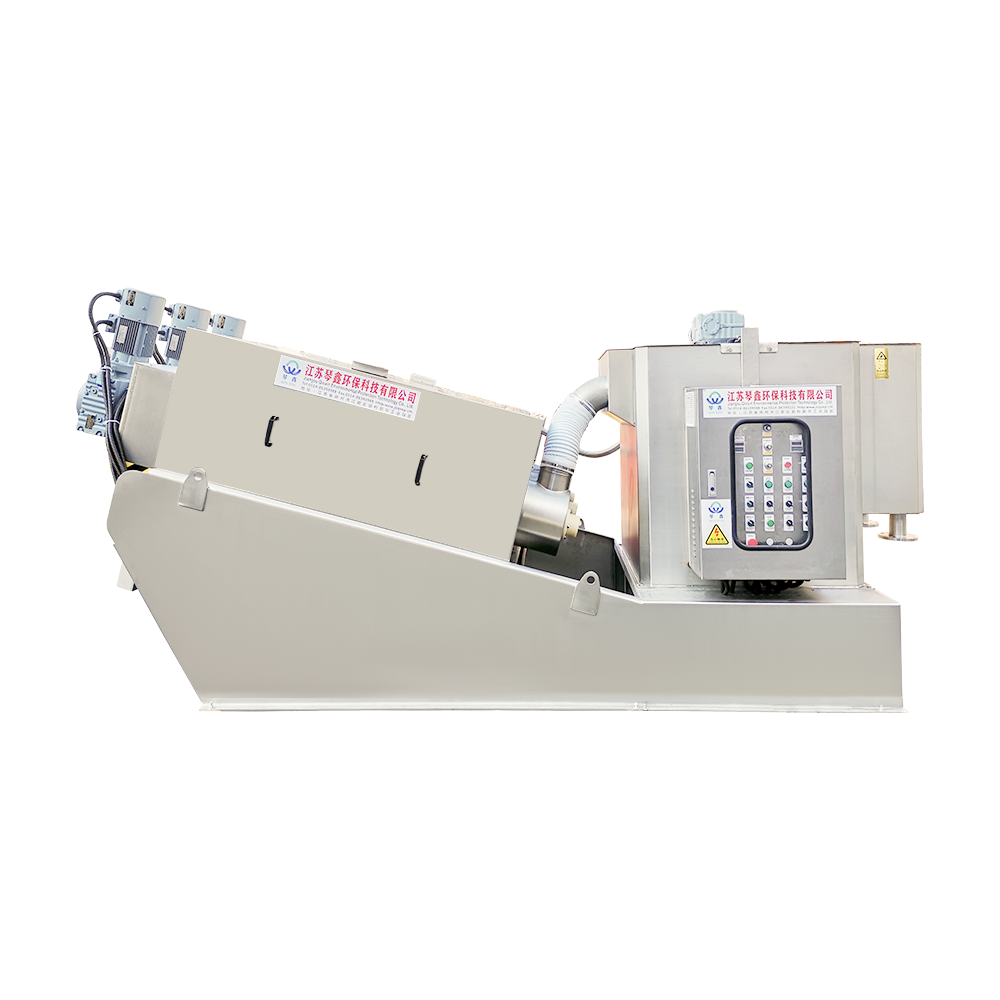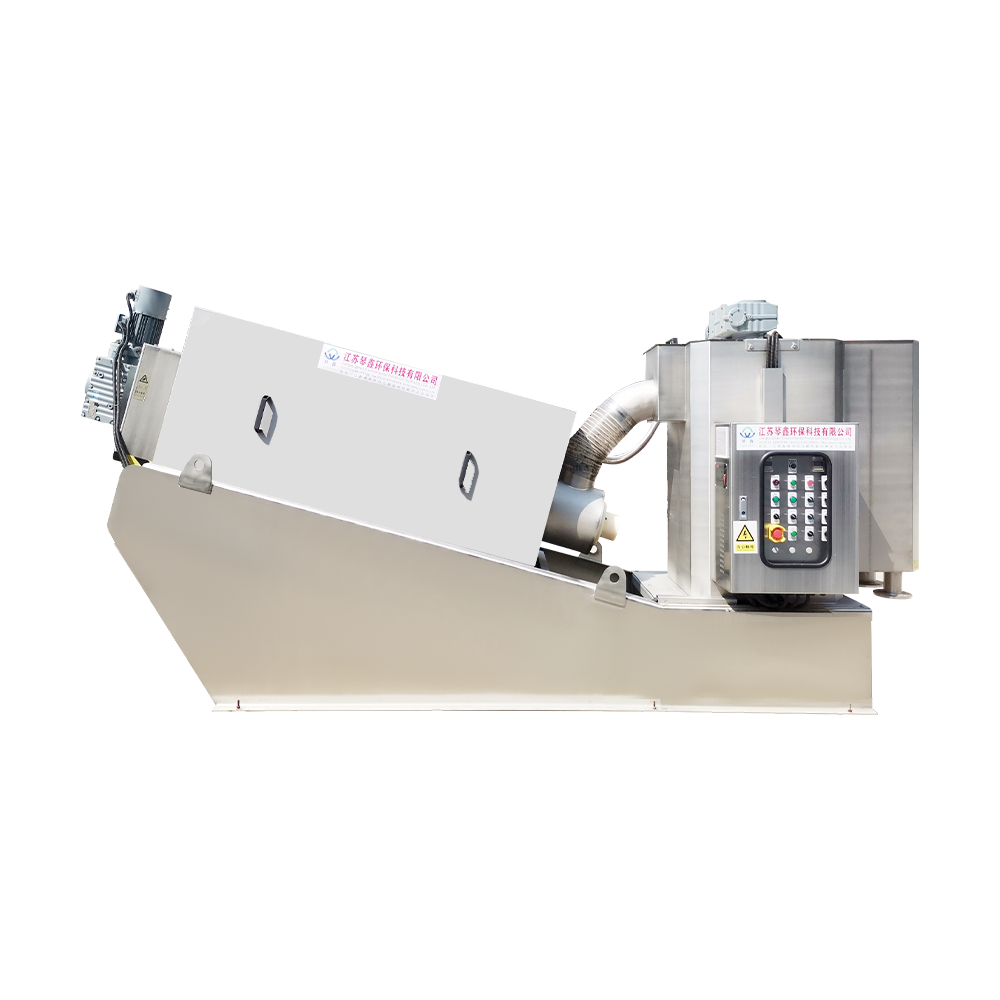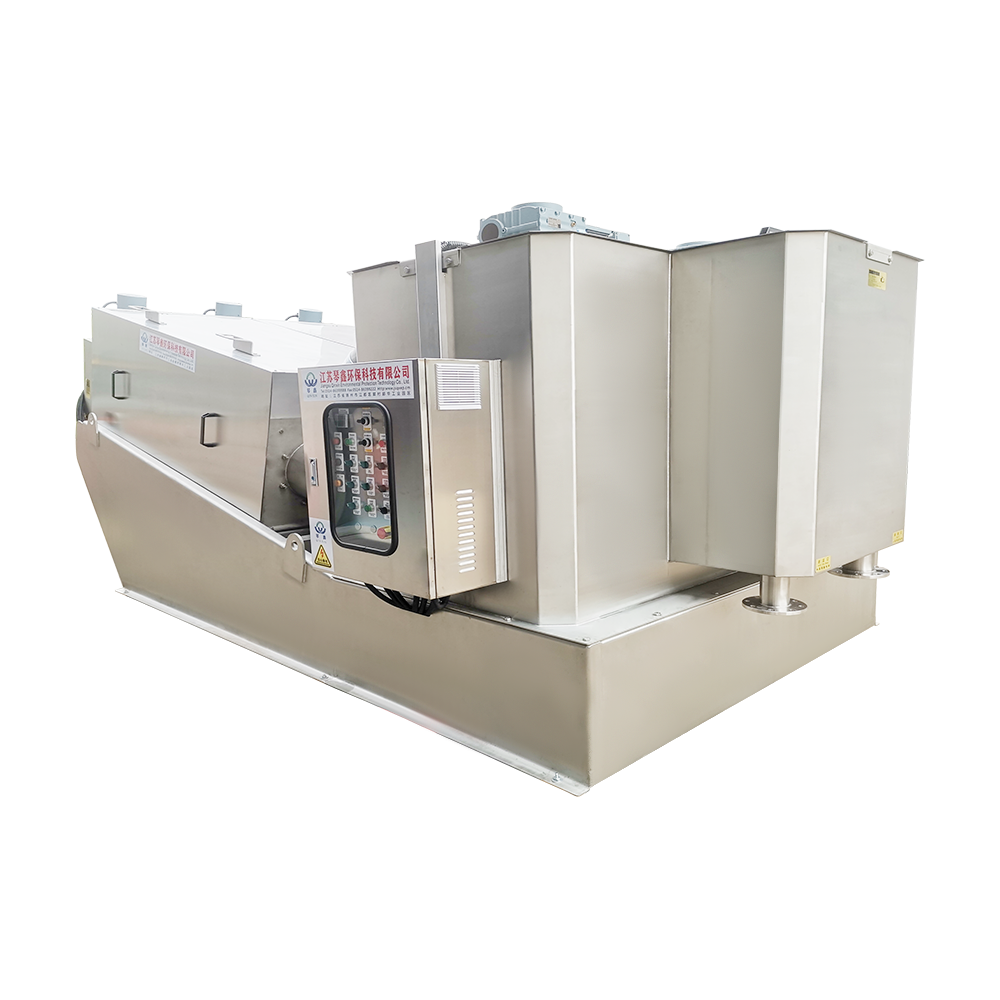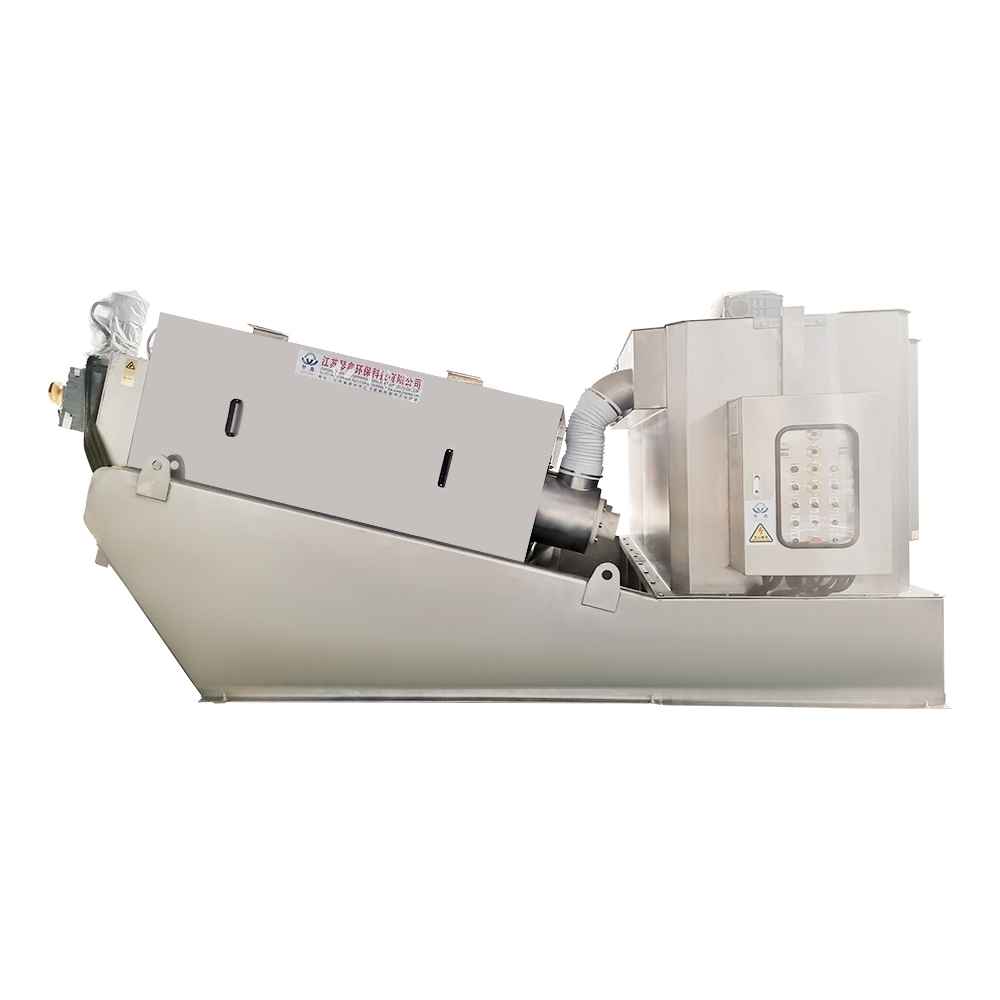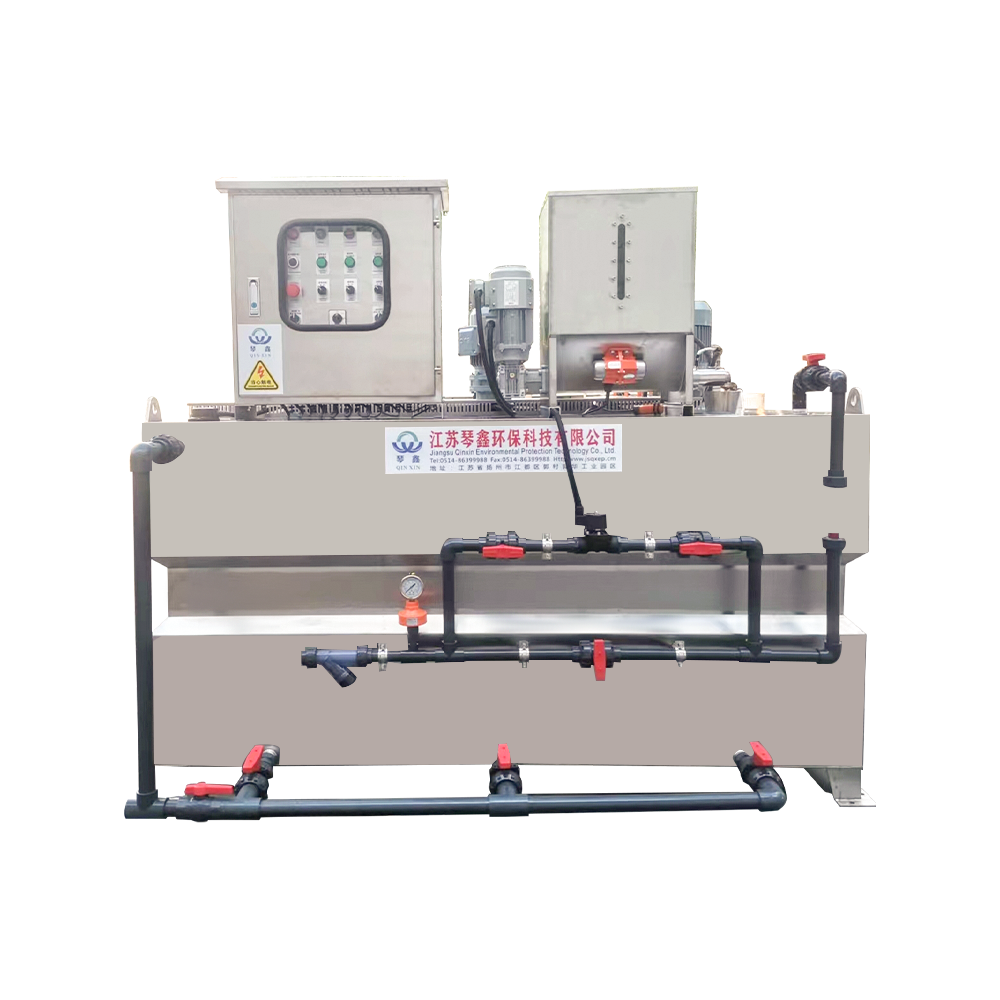The microfilter of domestic sewage treatment equipment is a drum-type screen filter device, where the treated wastewater enters the drum axially and flows out from the screen tube radially. Impurities (fine suspended solids, fibers, pulp, etc.) in the water are trapped on the inner surface of the sieve on the drum.
When impurities trapped on the filter are carried to the upper part by the drum, the pressure-washing water rushes back to the slag discharge tank and flows out. Microfilters belong to mechanical and physical filtration. There are no biological or chemical changes during the filtration process. It can remove a large amount of plankton, bait, feces, and other pollutants (fibers, particles, scales, etc.) from water quickly and effectively. Microfiltration is a fast and economical method that can reduce biological treatment load and improve water treatment efficiency. In practical treatment engineering, microfiltration tanks are widely used and have good filtration effects. They have very good application effects in the treatment of circulating water aquaculture water bodies. This has laid a solid foundation for subsequent processes, especially biological purification.
The function of a microfilter is to remove suspended solids from circulating water, which has a positive impact on the nitrification of the biofilter in the circulating water system. The growth of ammonia conversion bacteria requires a certain amount of organic matter, but fish excrement and feed residues can cause high organic matter content in aquaculture water, to the proliferation of organic matter digesting bacteria and competing with ammonia conversion bacteria in biofilms for growth space, dissolved oxygen, and nutrients. Due to the much faster reproduction rate of organic digestive bacteria compared to ammonia conversion bacteria, the removal rate of ammonia nitrogen by biofilters in aquaculture systems will be reduced.
Experiments have shown that when the ratio of biochemical oxygen demand (COD) to ammonia nitrogen is greater than 2.7, the ammonia nitrogen removal rate decreases by about 70%. After using the microfilter, the average difference in nitrogen concentration between the inlet and outlet of the biofilter is greater than 0.4mg/L, and the nitrogen concentration difference is less than 0.1mg/L when the microfilter is not used. This indicates that the microfilter has a significant effect on improving the water quality of the circulating water aquaculture system. There are significant benefits in reducing the impact of aquaculture water discharge on the environment and conserving water resources;
The drum screen filter microfilter is equipped with a filter screen on the drum. When the drum is working, the wastewater is treated enters the drum axially, and flows out through the sieve. Impurities (fine suspended solids, fibers, pulp, etc.) in the water are trapped on the inner surface of the drum filter. When impurities trapped on the screen are carried to the upper part by the drum, the impurities are flushed into the sewage tank by the backwash water on the outer side of the screen, achieving solid-liquid two-phase separation.
Wave receiver timer, filtered water returns to the pool for recycling. The all-plastic spin microfilter is driven by water and rotates continuously and automatically. The entire equipment is made of plastic material, which has strong corrosion resistance. The sieve is made of nylon material, with a mesh size of 80-300 mesh, an adjustable microfiltration speed of 1-10 r/min, a flow rate of 5-260 m3/h, a backwash water pressure of 0.2-0.3 MPa, and a washing water volume of 0.5-1.0% of the production water. The installation axis plane of the microfilter is 5cm lower than the horizontal plane of the breeding pool.
This microfilter has the advantages of small footprint, small head loss, large processing water volume, continuous operation, automatic cleaning, low operating cost, convenient filter replacement, simple installation and operation, less maintenance work, and long service life.
During operation, the diameter of the drum is 2/5 above the water surface, and the speed is 1-4r/min. The filtering speed of the filter is 30-120m/h, the flushing water pressure is 0.5-1.5kg/cm2, and the flushing water volume is 0.5-1.0% of the active water volume. When used for reservoir water treatment, the algae removal efficiency can reach 40-70%. Except for plankton, the efficiency reaches 97.99.99%. Microfiltration has a small footprint, a large production capacity (250-36000m3/d), convenient operation and management, and has been successfully applied in water supply and wastewater treatment.
Recommended Products
Products provided by famous enterprises are deeply trusted by users.
 TOP
TOP
 ENG
ENG
 English
English русский
русский Español
Español Tiếng Việt
Tiếng Việt ไทย
ไทย
